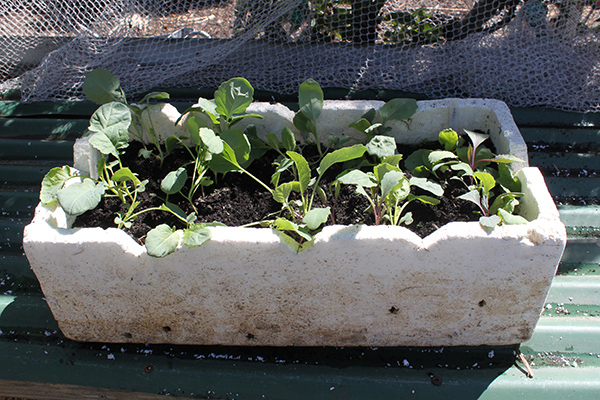Styrofoam boxes make ideal seedling boxes to grow seedlings in. The best type of styrofoam box to use is a fruit and vegetable box, but they are not always readily available. This post explains how to convert a styrofoam broccoli box into a seedling box if you can’t get hold of a styrofoam fruit and vegetable box.
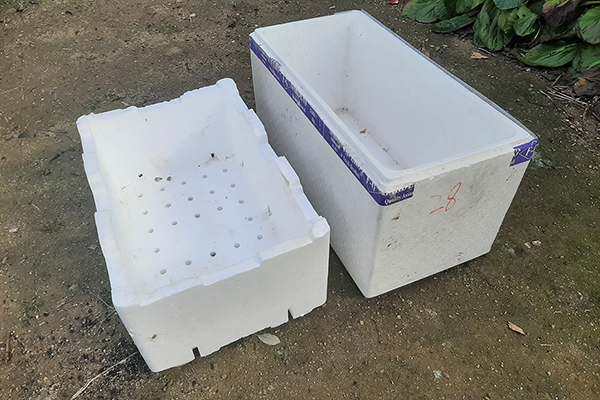
LEFT: A standard styrofoam fruit and vegetable box. RIGHT: A styrofoam broccoli box. Broccoli boxes are higher than standard fruit and vegetable boxes and are watertight, whereas standard boxes have large drainage holes in them.
Styrofoam boxes are disposable and usually can be obtained for nothing from supermarkets and greengrocers. Simply asking if they have any usually gets results. Though note that they are being phased out in favour of more environmentally friendly reusable alternatives, which means they are becoming harder to get.
1. Mark the top of the box and drill holes
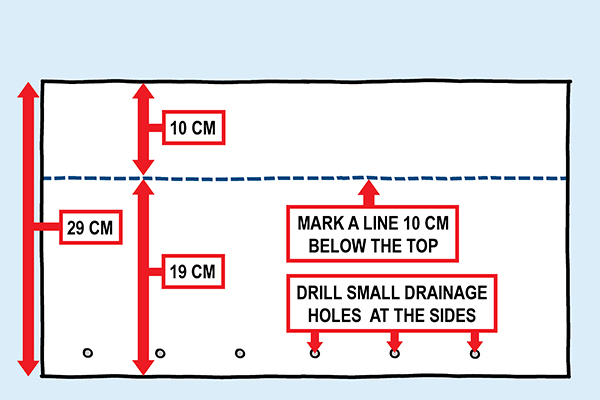
Use a pencil to mark a line 10 CM from the top of the box and drill small holes in the bottom and at the sides near the bottom to allow excess water to drain out. The amount you want to cut off can vary but it does need to be deep enough to hold a reasonable amount of soil.
2. remove the top of the box and cut small indents
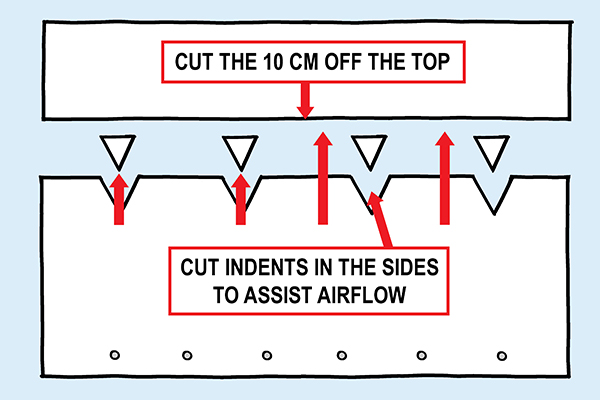
Cut the top section off using a serrated knife, a bread knife is ideal. Then cut small indents about 3 CM deep and 3 cm wide at the top. The number of indents can vary but I have found that four each side works well. These indents are to allow airflow when a sheet of glass is placed on to provide warmth in early spring.
3. fill the box with soil and seed raising mix
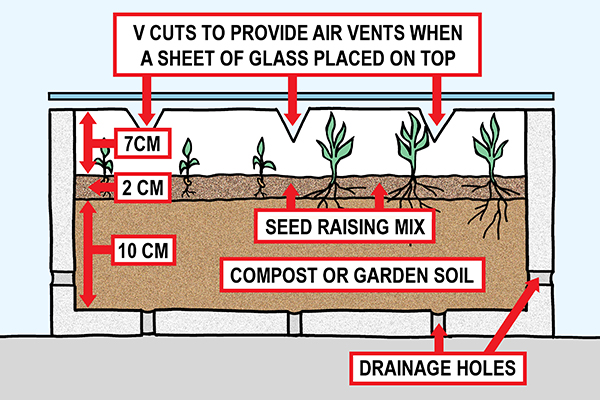
Fill the bottom 10 cm with soil or compost then cover with about 2 CM of seed raising mix, leaving 7 CM from the top of the box. If you don’t have a greenhouse, then cover the top with a sheet of glass in cold weather. The box is now ready to be used to grow seedlings in.
